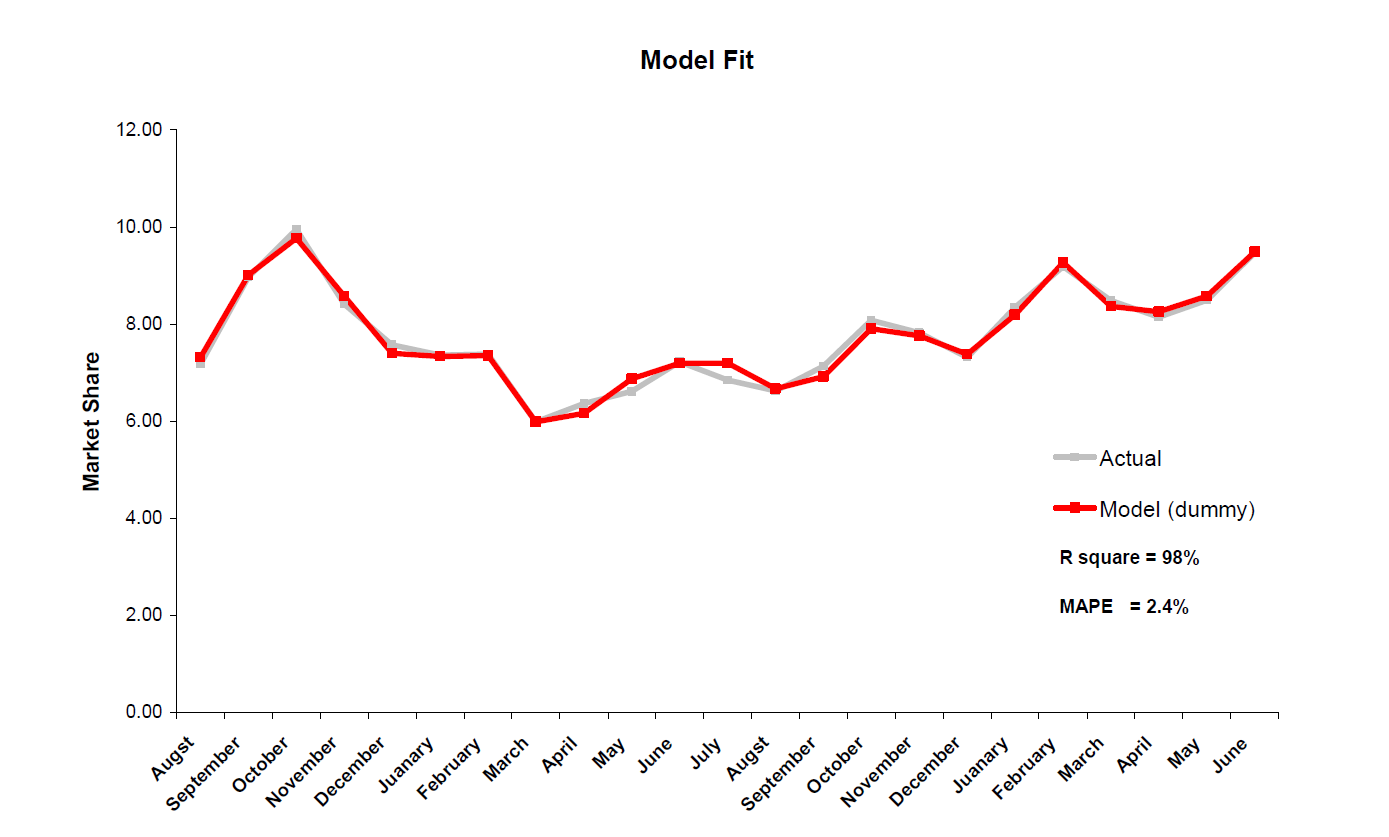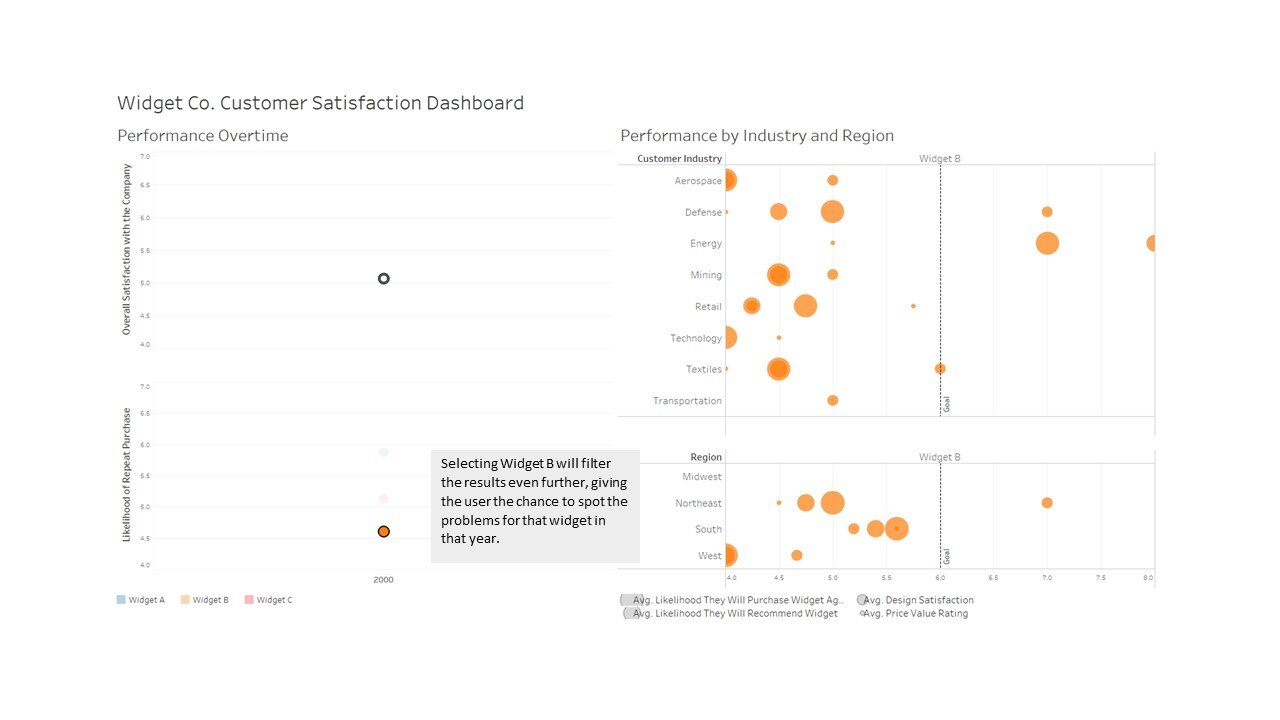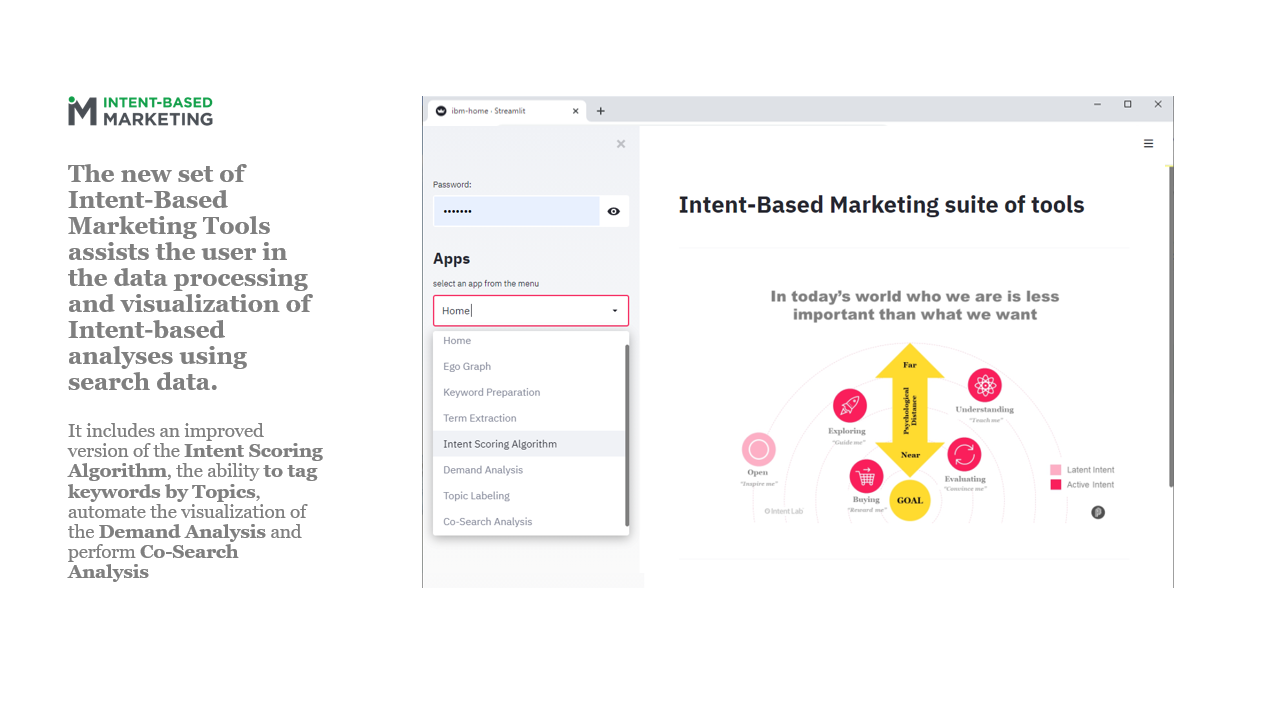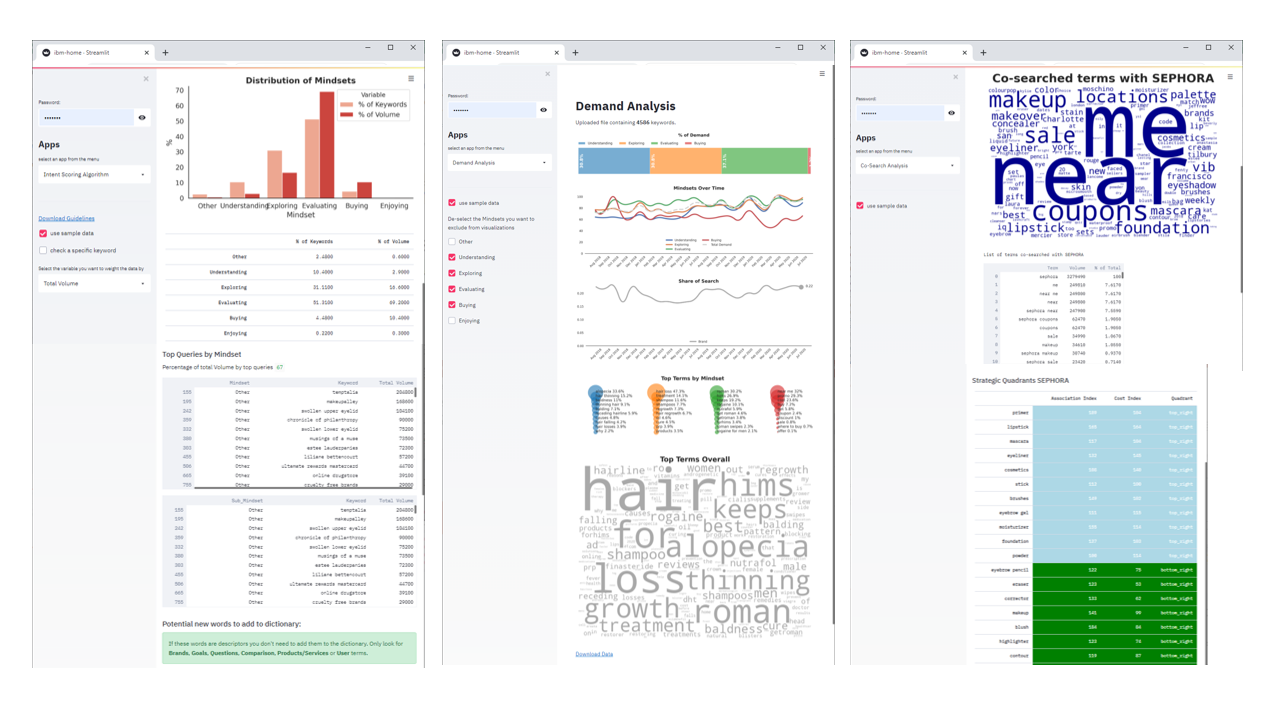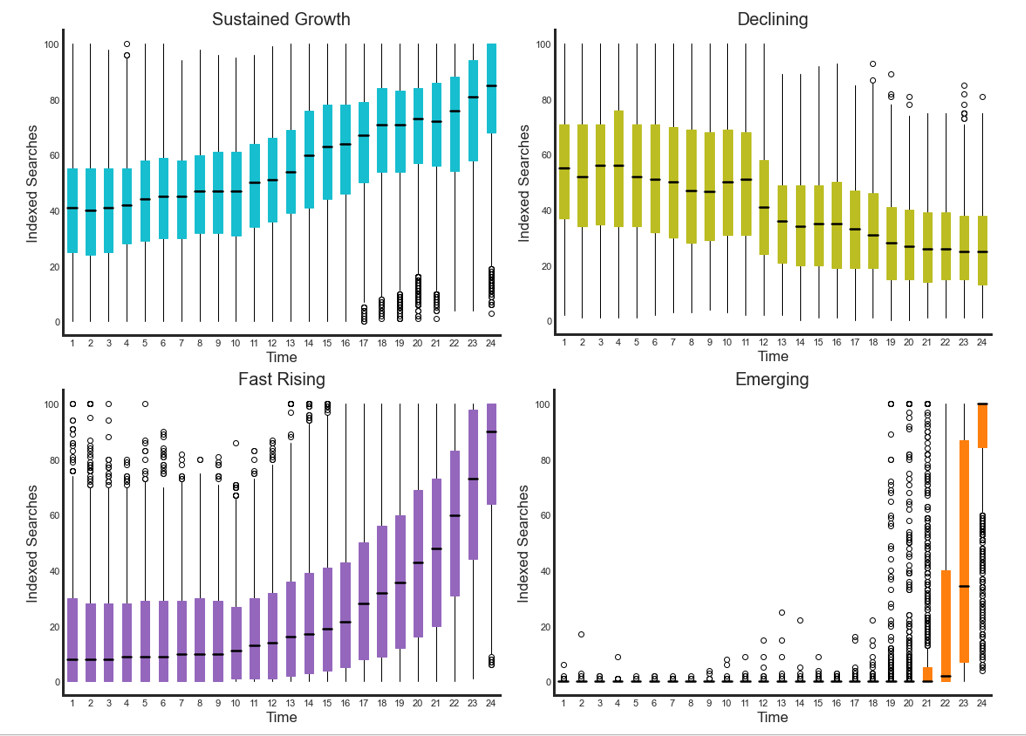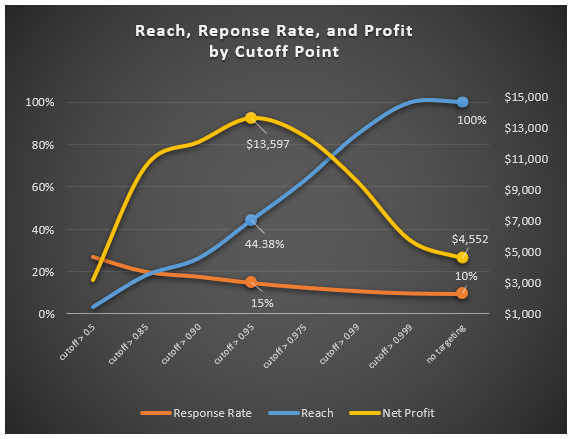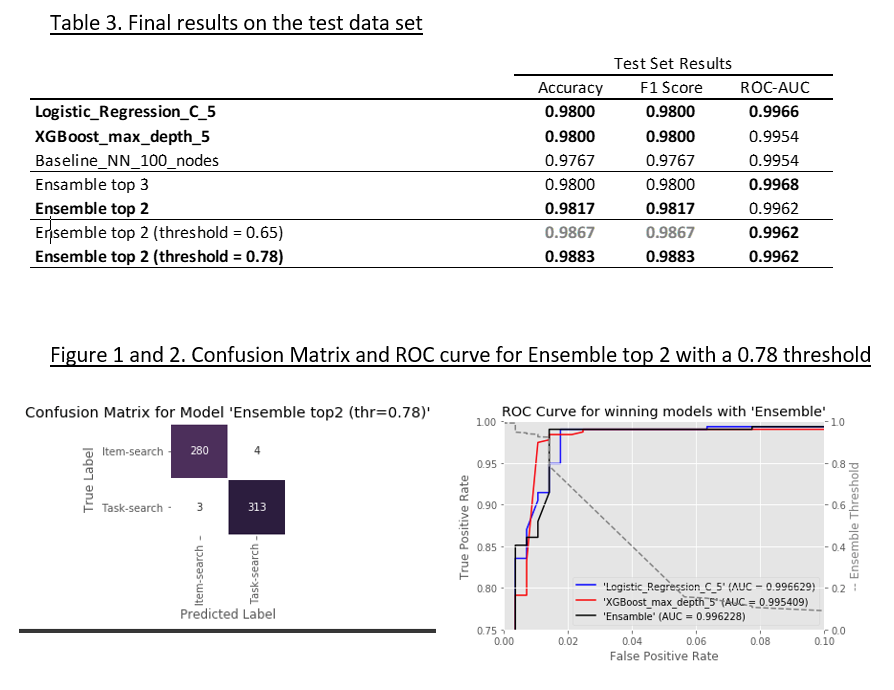Data Science
I have been doing data science before it was called Data Science, but I recently graduated from Northwestern University with a Master of Science in Machine Learning and AI where I deepened my knowledge and skills in this area. My experience ranges from traditional statistics, dynamic modeling, to Natural Language Processing (NLP). Below is a sample of my work in this area.
ECONOMETRIC MODELING
Brand Communications Modeling: Developing and Using Econometric Models in Advertising. An Example of a Full Modeling Process.
This report presents a description and a complete example of the modeling process required to build a comprehensive market response model that would account for the impact of marketing efforts on sales.
Data Visualization
Telling stories with data starts with good visualization.
Interactive dashboards
Attention-getting visuals
Network graph representing the consumer demand for makeup. It was built using NLP techniques on a comprehensive list of search queries submitted to Google.
Machine Learning
Using propensity models to estimate the Hispanic Opportunity for A Cruise Lines company
When I was the VP of Analytics and Insights at Luminar Insights (a big data analytics startup owned by Entravision Communications) I led a consulting project for a large cruise lines company using a series of Machine Learning approaches to develop propensity models and estimate the value of marketing to the Hispanic population in the U.S. The project required ingesting 8.2 million unique-guest records from the company’s CRM system, identifying Hispanics in the records with Luminar’s proprietary approach, enriching the data file with Luminar’s transactional records, and then developing propensity models to estimate lookalikes, segmenting the dataset based on customer behavior and transactions and cross-referencing the findings with U.S. census data to perform geo-referenced analysis.
Creating an Intent scoring algorithm to classify search queries into distinct consumer Mindsets
To enable Performics’ Intent-Based Marketing approach (link), I developed an Intent Scoring Algorithm to classify search queries based on the level of concreteness of the language used by the searchers as they type in their search queries. The algorithm leverages the learnings from a research project for Microsoft Bing by the Intent Lab, Performics’ proprietary research lab in partnership with Northwestern University’s Medill School of Journalism.
using the Intent Scoring Algorithm TO Analyze the active consumer demand in a product category
Using data from Google searches is a powerful way to understand the active consumer demand in a category. Click here to learn more about how I use the Intent Scoring Algorithm and other Machine Learning techniques to inform marketing strategy.
creating a web-based suite of interactive tools for the data processing of intent-based analyses
To provide access to the Intent Scoring Algorithm and other search data processing tools, I created a web-based app with interactive features and rich visuals. These tools assist the user in the data processing and visualization of intent-based analyses such as the Demand Analysis described above.
State-of-the-art Machine Learning techniques
I have direct experience with state-of-the-art Machine Learning techniques. Below are some examples. Click on the images below to learn more.
time series Trend classification
Dynamic modeling
Dynamic relationship pipeline for a financial services institution in the U.S.
Understanding the value of Hispanic Advertising
This is one of the many projects I have done to use the power of dynamic modeling and simulation (System Dynamics) to understand the fundamental dynamics of a system and identify leverage points to drive business and marketing strategy.
In this example, I built a quantitative model with a series of interconnected differential equations and calibrated it to real data to simulate the flow of people moving up and down in a chain representing different levels of engagement with a leading brand in the financial services industry in the U.S. The model was used to calculate the contribution of Hispanic and non-Hispanic advertising at each stage of the chain as well as to understand the role of Hispanic advertising in the marketing mix.
Agent-Based Modeling
Modeling sexual selection with Agent-Based Models
This paper discusses a well known principle in evolutionary biology called the handicap principle. Two agent-based-models were developed to illustrate the principle in an attempt to better understand its implications for the study of human behavior.
The use of biological concepts to explain human behavior is not new but during the past three decades evolutionary psychology has put the concepts and principles of evolutionary biology at the center of its meta-theory. The handicap principle in particular, has been used to explain human behavior and culture in a way that helps us understand the most fascinating and counter-intuitive characteristics of human beings.

